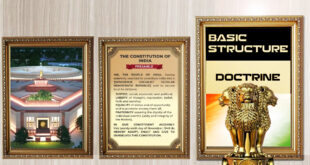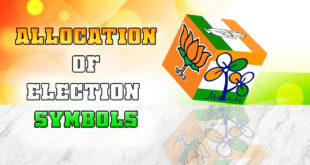- The scope of reviewing the laws placed under 9th schedule is limited.
- After the first amendment, the major landmark case in which the question of immunity granted to parliament was presented before the court was the case of Shankari Prasad.
- It was asked that whether Article 31B read with schedule 9 was unconstitutional by excluding the scope of judicial review.
- It was contended that excluding judicial scrutiny for such laws will amount to a violation of Article 13(2).
- The Court rejected the petition by stating that the amendments made under Article 368 are not affected by the application of article 13 (2).
- The parliament under Article 368, is empowered to amend the fundamental rights also and at such instances judicial encroachment is impermissible.
Golaknath case:
- In Golaknath case, it was held that the parliament has no power to amend the fundamental rights including the provisions on personal property.
- The parliament aggrieved by the judgement in Golaknath, passed the 24th amendment in 1971, which empowered it to amend any part of the Constitution including the fundamental rights.
Kesavnanada Bharati case:
- In its decision in Kesavananda Bharati case, the Apex Court through its largest constitutional bench of 13 judges stated that although the amendments made under Article 368 are Constitutional, the court is entitled to reject any of them if they violate the basic structure of the Indian Constitution.
- This case put a check on the enormous power of the parliament through the introduction of basic structure doctrine and made the judiciary more powerful.
Indira Gandhi v Raj Narain:
- A similar matter reached the court in Indira Gandhi v Raj Narain, regarding 39th amendment by the parliament which added some controversial laws under the ninth schedule.
- The court held that ordinary laws placed under 9th schedule cannot be subjected to basic structure test and only the constitutional amendments which are made through Article 368 are prone to judicial scrutiny if they are violative of basic structure.
Minerva Mills case:
- In Minerva Mills, the Supreme Court struck down clauses 4 and 5 which were added to Article 368 through 42nd amendment which granted unlimited power of legislation to Parliament.
- The doctrine of basic structure and the judgement in the case of Minerva Mills was later affirmed in many subsequent judgements including Waman Rao v Union of India, I R Coelho and M Nagaraj.
Conclusion
- The misuse of Article 31B and ninth schedule started only after the 4th amendment when few non-agrarian laws were excluded from the scope of judicial scrutiny.
- But ultimately, due to the intervention of the Apex Court from Shankari Prasad to Keshavananda Bharati had ensured to put a check on the powers of the legislature by describing the basic structure of the Indian Constitution.
SOURCE: THE HINDU, THE ECONOMIC TIMES, PIB
 Chinmaya IAS Academy – Current Affairs Chinmaya IAS Academy – Current Affairs
Chinmaya IAS Academy – Current Affairs Chinmaya IAS Academy – Current Affairs



